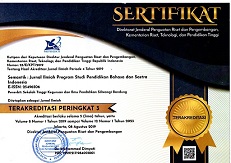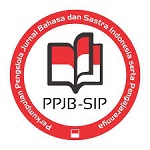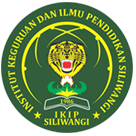MENGUNGKAP IDEOLOGI DI BALIK SELERA: ANALISIS WACANA KRITIS PADA IKLAN VIDEO GOFOOD DAN GRABFOOD
DOI:
https://doi.org/10.22460/semantik.v13i2.p187-206Keywords:
Critical Discourse Analysis, Digital Advertising, GoFood, Grabfood, IdeologyAbstract
This study critically analyzes the food delivery digital (video) advertisements by GoFood and GrabFood in Indonesia using Norman Fairclough's Critical Discourse Analysis approach. It aims to uncover how language in these advertisements shapes social reality and communicates specific ideologies to consumers. Through text analysis, discursive practices, and socio-cultural context, the study evaluates how these advertisements serve as promotional tools and embed social values and norms influencing consumer identity and behavior. The qualitative descriptive methodology focuses on GoFood and GrabFood YouTube advertisments, highlighting the strategic use of language and visual representation. Findings indicate that GoFood “Breaking News” and GrabFood “Hematematika” advertisements optimize linguistic and structural elements to convey ideologies of efficiency and modernity. The discussion explores the implications of these findings within social and cultural practices and their impact on economic and social dynamics. The study contributes to developing more inclusive and representative communication strategies in digital marketing. Further research should investigate similar advertisements in different cultural contexts to understand the broader impact.References
Arikunto S. (2013). Prosedur penelitian: suatu pendekatan praktik. Jakarta: Rineka Cipta.
Azizah, S. & Refnaldi, R. (2022). Multimodal analysis of gofood and grabfood advertisements. English Language and Literature, 11(2), 192-200.
Battista, I. D., Curmi, F., & Said, E. (2021). Influencing factors affecting young people’s attitude towards online advertising: a systematic literature review. International Review of Management And Marketing, 11(3), 58–72.
https://doi.org/10.32479/irmm.11398
Dewi, A. M. (2018). Pengaruh iklan online melalui instagram terhadap keputusan pembelian bagi peningkatan penjualan produk kuliner lokal. Ekonika Jurnal Ekonomi Universitas Kadiri, 3(1), 1. https://doi.org/10.30737/ekonika.v3i1.78
Elsiana, M. and Maradona, A. F. (2024). Service quality and customer loyalty in the online food delivery service industry. Quantitative Economics and Management Studies, 5(1), 197-203. https://doi.org/10.35877/454ri.qems2407
Eriyanto (2015). Analisis wacana: pengantar analisis teks media. Yogyakarta: LKiS.
Ervania, Teguh S. , & Nurhayadi. (2022). Analisis wacana kritis Norman Fairclough representasi kehidupan religius cerpen mbah sidiq karya A. Mustofa Bisri. SOSMANIORA: Jurnal Ilmu Sosial Dan Humaniora, 1(2). https://doi.org/10.55123/sosmaniora.v1i2.554
Fairclough, N. (1996). Language and Power. New York: Longman Inc.
Fairclough, N. (2012). “The Dialectics of Discourse”. [Online].
https://www.scribd.com/document/77459486/Fairclough-Dialectics-of-Discourse-Analysis
Fauzan, U. (2013). Analisis wacana kritis model Fairclough. Jurnal Pendidik, 5(2), 1-10.
Gojek Indonesia. (2021, February 21). BREAKING NEWS: #RekomendasikGoFood [Video].
Youtube. https://www.youtube.com/watch?v=PolmHEFd0J0
Grab Indonesia. (2023, August 28). Bebas Seenaknya Pesan di GrabFood Pasti Hemat
Maksimal! [Video]. Youtube. https://www.youtube.com/watch?v=jp_Laq_VRb4
Halim, A., Widiawati, Y., & Solihati, N. (2023). Analisis wacana pada iklan biskuat versi my buddy menggunakan pendekatan semiotika ferdinand de saussure. Lingua Rima: Jurnal Pendidikan Bahasa dan Sastra Indonesia, 12(3), 15-23.
Hudiyah, I. (2024). Penggunaan gaya bahasa Indonesia dalam pemasaran produk wafer tango. jbdi, 1(2), 6. https://doi.org/10.47134/jbdi.v1i2.2347
Jamil, A., Briandana, R., Marta, R. F., & Putri, Y. M. A. (2021). Representasi perdamaian dan harmoni: analisis semiotika pada iklan youtube. Jurnal Simbolika Research and Learning in Communication Study. https://doi.org/10.31289/simbollika.v7i2.5323
Kausaha, L. F., Hidayanti, I., & Damayanti, R. (2023). The influence of online customer review and online customer rating on gofood purchase decisions in the gojek application. Journal of Management and Islamic Finance, 3(1), 20-33. https://doi.org/10.22515/jmif.v3i1.6588
Koesharijadi, K., Merthayasa, A. A. A., & Nendi, I. (2022). Development of digital marketing strategy and service quality using social media towards digital economy. Journal of Social Science, 3(4), 799–804. https://doi.org/10.46799/jss.v3i4.375
Marta, R. F., & Rieuwpassa, J. S. (2018). Identifikasi Nilai Kemajemukan Indonesia Sebagai Identitas Bangsa Dalam Iklan Mixagrip Versi Keragaman Budaya. Jurnal Kajian Komunikasi, 6(1), 37. https://doi.org/10.24198/jkk.v6i1.15416
Moleong, L. J. (2001). Metodologi Penelitian Kualitatif. Bandung: PT Remaja Rosdakarya.
Nugraha, N. H., Wibowo, S. M., & Farelti, M. A. (2022). Representasi domestikasi dan streotype perempuan dalam iklan termorex patch versi plester demam. Jurnal Audiens. https://doi.org/10.18196/jas.v3i4.14536
Petrovici, D. A., Marinova, S. T., Marinov, M. A., & Lee, N. (2007). Personal Uses and Perceived Social and Economic Effects of Advertising in Bulgaria and Romania. International Marketing Review, 24(5), 539–562. https://doi.org/10.1108/02651330710827988
Ramadhani, S., Suroso, A., & Ratono, J. (2020). Consumer attitude, behavioral intention, and watching behavior of online video advertising on youtube. Jurnal Aplikasi Manajemen, 18(3), 493-503. https://doi.org/10.21776/ub.jam.2020.018.03.09
Raza, S. H., & Zaman, U. (2021). Effect of cultural distinctiveness and perception of digital advertising appeals on online purchase intention of clothing brands: moderation of gender egalitarianism. Information, 12(2), 72. https://doi.org/10.3390/info12020072
Sadiah, E., Yanti, P. G., & Tarmini, W. (2023). Berita kekerasan seksual terhadap perempuan dalam dunia pendidikan: Analisis wacana kritis model Sara Mills. Lingua Rima: Jurnal Pendidikan Bahasa Dan Sastra Indonesia, 11(3), 230. https://doi.org/10.31000/lgrm.v11i3.8010
Saraswati, A., & Sartini, N. W. (2017). Wacana perlawanan persebaya 1927 terhadap pssi : analisis wacana kritis norman fairclough (Persebaya 1927’s resistance against pssi: a norman fairclough’s critical discourse analysis study). Mozaik Humaniora, 17(2), 181–191.
Satrio, D., & Asri, L. (2023). Analisis Empathy, Persuation, Impact Dan Communication (Epic Model) Dalam Meningkatkan Kepercayaan Publik. Inobis Jurnal Inovasi Bisnis Dan Manajemen Indonesia, 6(3), 350–358. https://doi.org/10.31842/jurnalinobis.v6i3.282
Setyowati, I. D., Amanah, O., & Satria, G. B. (2020). Analisis struktur wacana pada iklan ojek online grab dan gojek. LINGUISTIK: Jurnal Bahasa dan Sastra, 5(1), 6-23.
Shaouf, A. (2018). Revising the effects of online advertising attributes on consumer processing and response. International Journal of Marketing Studies, 10(1), 39. https://doi.org/10.5539/ijms.v10n1p39
Umarela, D., et al. (2020). The influence of advertising on consumer behavior. Journal of
Marketing Insights, 10(2), 45-58.
Utomo, R. (2020). Advertising strategies and their impact on consumer perceptions and
behaviors. International Journal of Consumer Studies, 44(3), 321-335.
Wahyoedi, B. (2022). Representation of consumerism in grabfood advertisement: A critical discourse analysis. Journal of English Language and Culture, 12(2). https://doi.org/10.30813/jelc.v12i2.3079
Wang, D., & Zhang, K. (2023). The Effect of Emotional Design of Digital Advertising on Consumer Empathy, Ad Liability, and Purchase Intention. Korea Institute of Design Research Society, 8(1), 272–283. https://doi.org/10.46248/kidrs.2023.1.272
Wang, J., Dang, W., Hui, W., Muqiang, Z., & Qi, W. (2021). Investigating the Effects of Intrinsic Motivation and Emotional Appeals Into the Link Between Organic Appeals Advertisement and Purchase Intention Toward Organic Milk. Frontiers in Psychology. https://doi.org/10.3389/fpsyg.2021.679611
Wright, P., Friestad, M., & Boush, D. M. (2005). The development of marketplace persuasion knowledge in children, adolescents, and young adults. Journal of Public Policy & Marketing, 24(2), 222–233. https://doi.org/10.1509/jppm.2005.24.2.222
Downloads
Published
Issue
Section
License

This work is licensed under a Creative Commons Attribution-ShareAlike 4.0 International License.
The author is responsible for acquiring the permission(s) to reproduce any copyrighted figures, tables, data, or text that are being used in the submitted paper. Authors should note that text quotations of more than 250 words from a published or copyrighted work will require a grant of permission from the original publisher to reprint. The written permission letter(s) must be submitted together with the manuscript.










